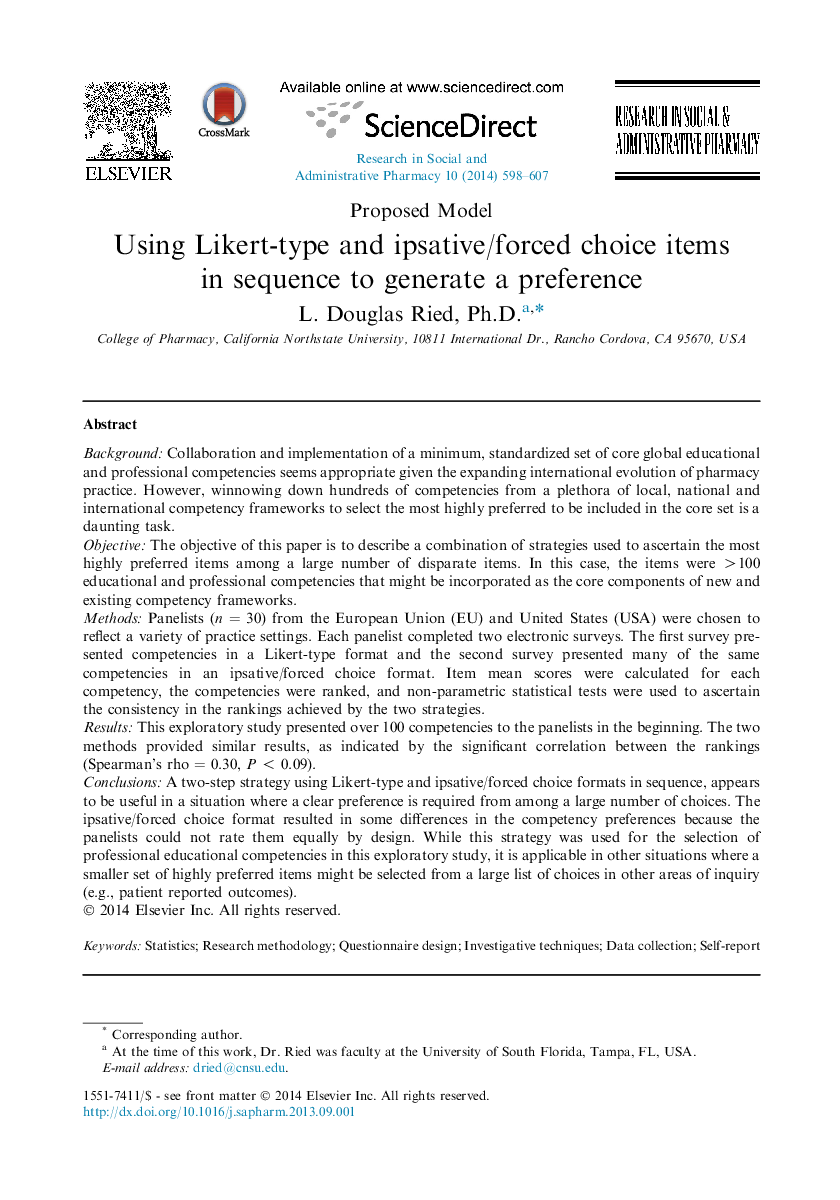| Article ID | Journal | Published Year | Pages | File Type |
|---|---|---|---|---|
| 2508398 | Research in Social and Administrative Pharmacy | 2014 | 10 Pages |
BackgroundCollaboration and implementation of a minimum, standardized set of core global educational and professional competencies seems appropriate given the expanding international evolution of pharmacy practice. However, winnowing down hundreds of competencies from a plethora of local, national and international competency frameworks to select the most highly preferred to be included in the core set is a daunting task.ObjectiveThe objective of this paper is to describe a combination of strategies used to ascertain the most highly preferred items among a large number of disparate items. In this case, the items were >100 educational and professional competencies that might be incorporated as the core components of new and existing competency frameworks.MethodsPanelists (n = 30) from the European Union (EU) and United States (USA) were chosen to reflect a variety of practice settings. Each panelist completed two electronic surveys. The first survey presented competencies in a Likert-type format and the second survey presented many of the same competencies in an ipsative/forced choice format. Item mean scores were calculated for each competency, the competencies were ranked, and non-parametric statistical tests were used to ascertain the consistency in the rankings achieved by the two strategies.ResultsThis exploratory study presented over 100 competencies to the panelists in the beginning. The two methods provided similar results, as indicated by the significant correlation between the rankings (Spearman's rho = 0.30, P < 0.09).ConclusionsA two-step strategy using Likert-type and ipsative/forced choice formats in sequence, appears to be useful in a situation where a clear preference is required from among a large number of choices. The ipsative/forced choice format resulted in some differences in the competency preferences because the panelists could not rate them equally by design. While this strategy was used for the selection of professional educational competencies in this exploratory study, it is applicable in other situations where a smaller set of highly preferred items might be selected from a large list of choices in other areas of inquiry (e.g., patient reported outcomes).
